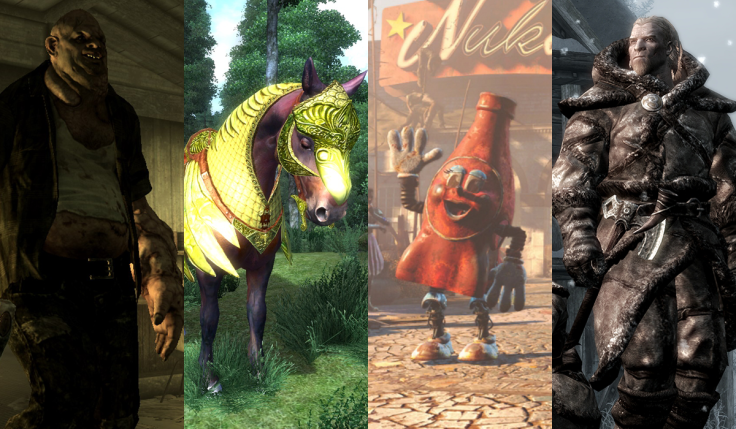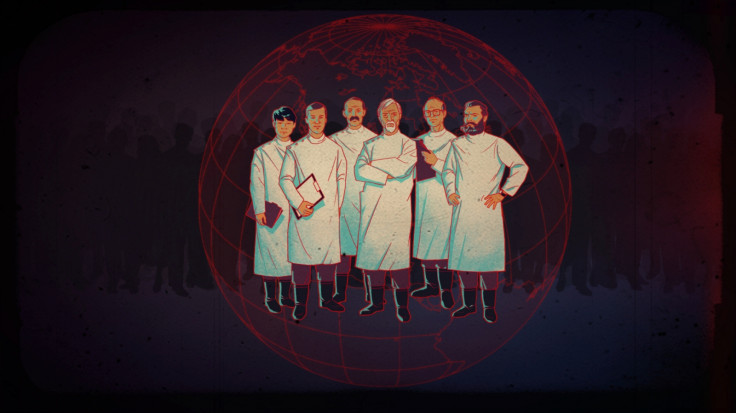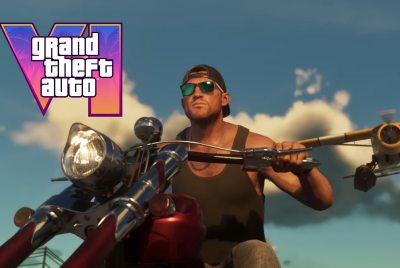The illustrious history of Bethesda's Fallout and Elder Scrolls DLC: From Horse Armour to Nuka World
A look at the expansions Bethesda has developed for premiere RPG series.

Whenever a Bethesda RPG is released, audiences have come to expect expansions and DLC that add a little bit more world to explore, narrative to enjoy, a higher level cap and new shiny weapons and armour. Bethesda have around 14 years' experience making DLC under their belt, and in those years there's been a wide variety in both styles and quality.
Ahead of the release of Fallout 4's final expansion – Nuka World – we wanted to take a look back over the ups and downs of Bethesda's recent history of making expansions and add-ons for its two premier RPG series.
When you look back at reviews for the first additions to the classic Elder Scrolls III: Morrowind, Tribunal and Bloodmoon, the majority of slightly-confused critics seemed to say little more than: "The game was already huge, but this is awesome, thanks!" Before DLC was commonplace, such additions were received as bonuses, not anticipated prologues or siphoned portions of the main experience.
Bethesda's DLC game took a step up with The Elder Scrolls IV: Oblivion - the proud recipient of my awards for both the best and worst of the studio's DLC. Horse Armour is the go to "lest we forget" example of just how trivial DLC can be. As an eleven-year-old obsessed with Oblivion at the time, I remember being thrilled at the prospect of armouring up my favourite pony. I didn't quite realise how weird the horse looked in glittering gold elven armour. It is of course, a complete joke. And rightly so. The DLC included only two different sets of armour for your horse, and remains a prime example of pointless cosmetic DLC.
On the other side of the coin is the Shivering Isles expansion, in which players ventured to the realm of Sheogorath, the Daedric Prince of Madness. A big new area with an interesting quest line, what made Shivering Isles a classic is that it was entirely different. The flora and fauna were unique, the clothing, architecture, armour and weapons stood separately to what could be found in main world of Cyrodil. It still had many of the same issues as the main game – it was buggy and held together by little more than the sheer will of its developers – but it was also more of what we loved.
Fallout 3 had an odd array of expansions. Operation: Anchorage threw players into a military simulation of a famous pre-apocalypse battle, and while it was a nice idea, the buggy linear two to three hours it provided focused too much on the game's weak combat. The Pitt was much more in line with the atmosphere and dystopian struggle people liked about Fallout 3.

A much needed raised level cap and an ability to explore the wasteland after the end of the main story was added with the Broken Steel expansion, while the final two offered a flavour of something different. Point Lookout let the protagonist explore a swamp and derelict pleasure town, and its atmosphere and unique quests make it one of Bethesda's most memorable pieces of DLC. The last expansion, Mothership Zeta, went completely left-field, putting players on an alien spaceship with some fellow abductees plucked from various time periods.
Though developed by Obsidian and published by Bethesda, Fallout: New Vegas deserves at least a brief mention. The Dead Money expansion was a personal favourite of mine, thanks to its haunting story and great characters. Honest Hearts meanwhile offered a complete change in environment, placing players in the pristine valley of Zion, a canyon of red stone and wall paintings. Old World Blues was brilliantly written and started with players having to get their brains back, and finally there's Lonesome Road, which neatly finished off the main protagonist's story, despite ultimately being an underwhelming add-on.
With Oblivion, Bethesda honed its two main varieties of DLC: ones in which players get a new area or questline, and additions focused on construction and customisation. It wasn't until the sequel that these two types of expansion became more clear.
The Elder Scrolls V: Skyrim was so hugely popular that the DLC largely just gave the fans more of what they wanted: a chance to spend more time in that world doing more than killing mudcrabs. Dawnguard added a new faction quest involving vampires, while Dragonborn had the player travel to the Solstheim to battle a powerful new foe.
Despite being the smallest in scope, it turns out Hearthfire offered a huge hint at the focus on settlement building that was to come in Fallout 4. A kind of middle ground between Oblivion's set castles and houses and Fallout 4's freedom in construction, it allowed players to a kind of snap together a manor building for themselves. You could also adopt some kids for some reason.
In total, Fallout 4 will have 6 pieces of DLC following Nuka World's release. Three of these are settlement focused; additional items and abilities allowing players to construct more intricate devices. The remaining half are all quest or area focused.
Automatron is closest to a hybrid between the two, featuring no new big areas but a (fairly short) questline and the ability to create your own robot. It's not exactly an essential piece of DLC but constructing your own robot pal is enjoyable.
The three add-ons that add to the settlement building almost entirely rest on the player's relationship with the main game's central mechanic of home expansion. If, like me, you don't mind battling the clumsy controls in an attempt to build a nice community then Vault-Tec Workshop offers the widest array of new tools and items. Wasteland Workshop and Contraptions Workshop meanwhile, are suited to those who want to build machines, complex light structures, cages and fighting pits. If you ignore the needy settlements that ask players for constant help; these add-ons will certainly not change that. It does make you wonder however, whether Bethesda really warranted three separate pieces of DLC.
Just when I was losing hope in Fallout 4 DLC, Far Harbour came along and lifted my spirits. Reminiscent of the excellent Point Lookout from Fallout 3, Far Harbour has you exploring, building, helping and hunting on an island that's a Maine fishing locale taken over by a radioactive fog. While a great addition overall, it has flashes of brilliance that involves the macabre silliness prevalent through the best of the Fallout series.
The trailer for the last piece of DLC, Nuka World (embedded above), has me tentatively excited. If it can capture those moments of warped creepiness, while embracing a unique area with interesting items, then I am whole-heartedly on board.
Sometimes unnecessary and occasionally wonderful, Bethesda's DLC for long-running RPG series have both infuriated and brought joy to fans for over a decade. Let's just keep our fingers crossed that we never have to relive Horse Armour again.
For all the latest video game news follow us on Twitter @IBTGamesUK
© Copyright IBTimes 2025. All rights reserved.



















